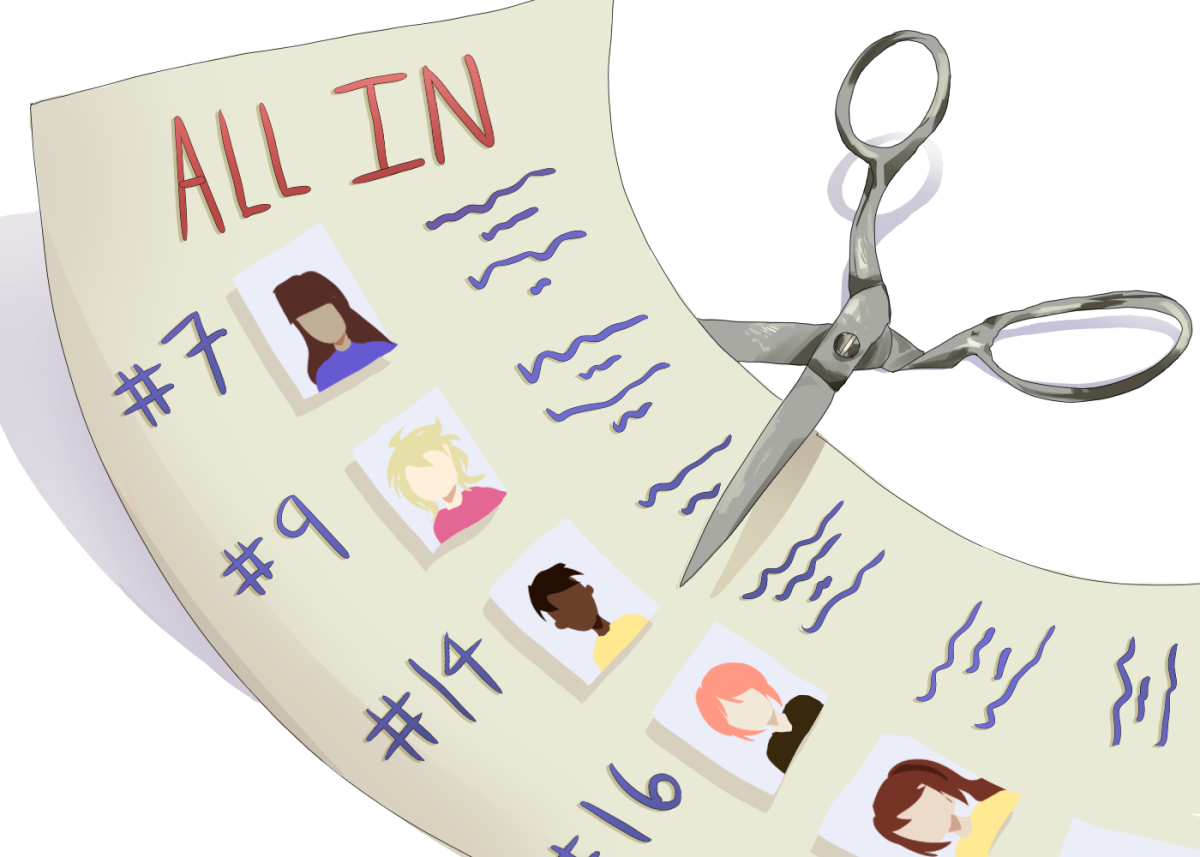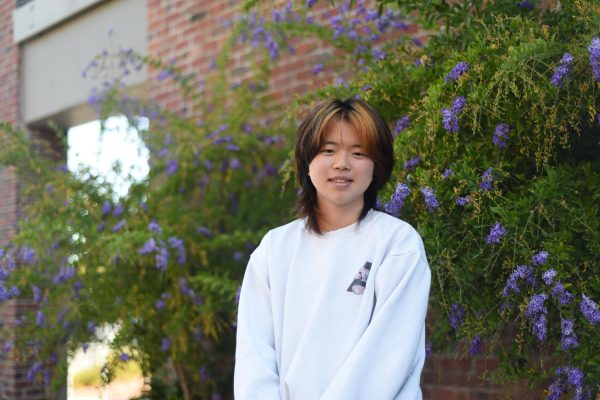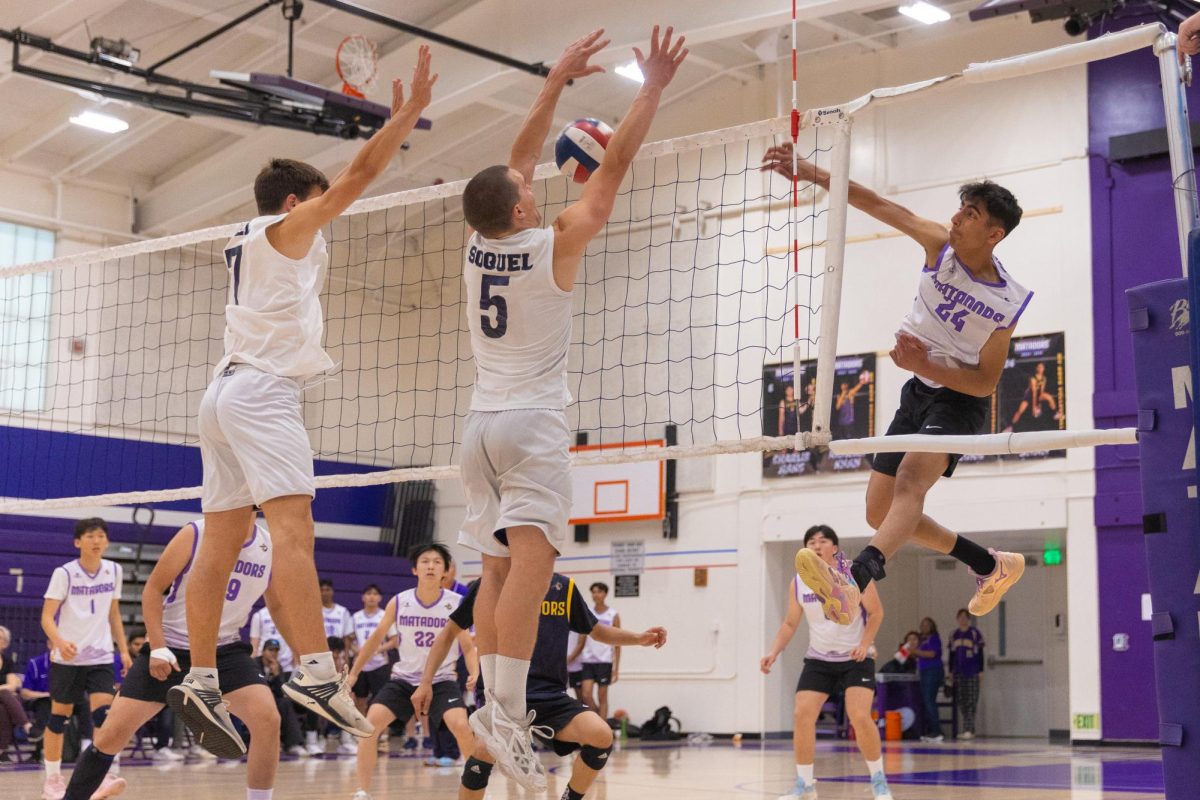Out of the 54 total athletic teams at MVHS, many teams, including football, softball, cross country, dive and track & field, do not enforce cuts when determining their rosters. No-cut refers to sports teams that do not require tryouts to join. The decision to implement no-cut policies comes as a way to provide MVHS students an incentive to get involved with school athletics, as well as an outlet for sports teams to increase player participation.
Senior and softball shortstop Cara Constant, who has played softball for 10 years both recreationally and competitively, cites the team’s struggle with recruitment as the reason for enforcing no-cut policies. Constant states that since softball isn’t a popular sport in Cupertino, no-cut policies allow the team to increase player participation.
“Because it’s no cut, we can just take anyone and that’s better than cutting people because we don’t have enough [people],” Constant said. “It’s been a bit of a rough season, but if we have more people, then we can teach more people the game and that’s more valuable than cutting.”
Similarly, MVHS varsity football head coach Ceazar Agront, who formerly coached softball, believes that cuts are difficult to enforce, especially in team sports with many different positions to fill. While softball requires a total of nine players on the field at once, football standards recommend 33 different starting positions, with 11 players on the field concurrently for both offense, defense and for special scenarios such as punts, kickoffs and extra point attempts. Agront highlights that MVHS football doesn’t enforce cuts because of the physical risks players take when playing football. In order to provide new players the time to consider whether they wish to take on this risk, the team hosts extensive tryouts to allow players to get a feel for the game before they commit.
“Tryouts are an ongoing process from the spring,” Agront said. “We are given that time to allow us to recruit players on campus and give them a taste of football. This is the time we help players get experience and filter them into starting positions and also helps us get data on how we can better coach them. Our practices enhance the players because we’re seeing what level they’re at after spring, going into summer, and then from summer, we use that time to process even more data so that we can get ready for the season.”
Both football and softball utilize no-cut policies to help fill positions while allowing players to gain experience. This approach also aligns with MVHS’s graduation requirements, which require students to complete a total of 20 physical education credits over four years, with participation in a sports team providing students with five credits per season. Senior and softball pitcher Siena Banks highlights that while no-cut sports can incentivize players to join solely for P.E. credits, many players grow to truly appreciate being part of the team.
“At first people join for credit, and then they kind of start to learn the game and learn the team,” Banks said. “They start to genuinely enjoy it. There’s a lot of goofing off and not serious practices, but as we have games and keep practicing, they enjoy it more and more rather than thinking it’s just for P.E. credit.”
While Constant agrees that a fun team culture may be attractive to players hoping to join the team, she points out that it’s still important to maintain a culture that values dedication and improvement within the team nonetheless. She recounts how the team’s trainings are accommodated to help those without prior experience and ensure everyone has a chance to grow, valuing players who are open to learn over prior experience, especially on JV teams.
“You should take everyone on JV because everybody has the potential to grow,” Constant said. “I think players should have the willingness to learn, but not expect to play the first year or not expect to play all the time.”
Agront shares Constant’s sentiment, underscoring that while prior experience is certainly a benefit, a sports team’s success is created by the maintained standard of dedication of the players to the sport. As a result, Agront integrated an emphasis on player commitment into his coaching philosophy.
“I always say ‘I don’t cut people, the players cut themselves,’” Agront said. “When you’re not showing up to practice and you’re not showing me solid commitment, or you don’t communicate, then how am I supposed to move forward and plan for the team, plan practices, plan your way to get better? It’s never going to be about skill. I feel like it’s always going to be about showing up so that I can help guide you to get the skill required to have success.”
Agront understands that many coaches enforce cuts to weed out underperforming players and understands this reasoning. However, he believes a coach’s priority should be to allow every player the opportunity to improve and contribute to the team.
“I don’t want the kids to feel like the reason why I’m cutting them is because they can’t be successful on this team,” Agront said. “I feel like it’s a coaching problem. I’m gonna put it on me because that kid chose to give me their time. If they’re trying to make this commitment to me then I’m going to make sure the commitment from the player is going to be reciprocated.”
Constant expresses similar opinions, explaining that teams should be looking to build on areas of improvement rather than judging based on potential. She adds that the primary barriers of entry for athletes in a sport is the process of learning the basics, and overcoming this obstacle allows for the quick integration of athletes into the team.
“Of course, some sports cut people because they don’t see potential, but I think anyone can learn again,” Constant said. “Once you learn the mechanics – It’s pretty easy to throw a ball and hit the ball. Although you may not know the rules, it’s easy to catch on and learn after practice.”
Furthermore, Agront believes that no-cut policies such as not requiring tryouts, offer greater flexibility when it comes to building a cohesive team, emphasizing that while individual excellence is important, a team’s performance ultimately hinges on how well a team can play to each other’s strengths. As a result, Agront believes that increasing player population through no-cut policies paired with a rigorous preseason allow him more initiative to match players— regardless of experience— to starting positions by building on player’s individual strengths and weaknesses to fit their respective role.
While Agront believes that no-cut policies do benefit aspiring athletes who seek to learn and improve in their respective sports, he underscores that the purpose of no-cut sports extends beyond the P.E. credits provided. He affirms that the end purpose of no-cut policies is to provide opportunities for all students to get involved with athletics, even if they have no experience.
“We’re not being told to cut people or not cut people,” Agront said. “We just want to give students opportunities. We don’t want to turn someone off from the sport. We want everyone to be ready to go and be excited about it. That’s why we opened the doors. If you put on the Monta Vista uniform, I’m gonna find a way to get you in the game.”












